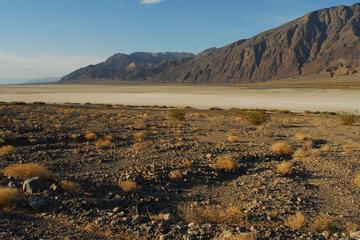
Filled with craters, abstract land formations, canyons, mountains and desert, Death Valley isn't considered 'A Land of the Extremes' for nothing. With activities like hiking, biking, camping, or bird watching, you can reconnect with nature like you never have before.
The Furnace Creek Area is one of the highlights of Death Valley National Park. The Furnace Creek Area features the Golden Canyon, the Natural Bridge, a massive rock formation spanning across a desert canyon, and the infamous Bad Water, a series of salt flats making up the lowest point in North America at 282 feet (86 m) below sea level. Ironically, Bad Water is only 76 miles (122 km) east of Mt Whitney, the highest point in the continental United States at 14,505 feet (4,421 m).
Other highlights include the Stovepipe Wells Area, filled with sand dunes and canyons, Scotty's Castle Area, featuring an elaborate Spanish-style mansion of a local prospector, and the Panamint Spring Area, made up of Darwin Falls and the famous Joshua trees.
Death Valley is located 2 hours outside of Las Vegas, on the border of California and Nevada. Death Valley stretches approximately 140 miles (225 km) north to south. It is known for its extreme weather (it's one of the hottest places on Planet Earth, after all!). People visit Death Valley year-round, though the busiest time of year is between October and April, when desert temperatures are at their mildest (in other words when it's plain old hot - instead of scorching hot).
Keep in mind, Death Valley holds the record for the highest reported temperature in the Western Hemisphere: on July 10, 1913 the temperature hit 134 F (56.7 C) in aptly named Furnace Creek.